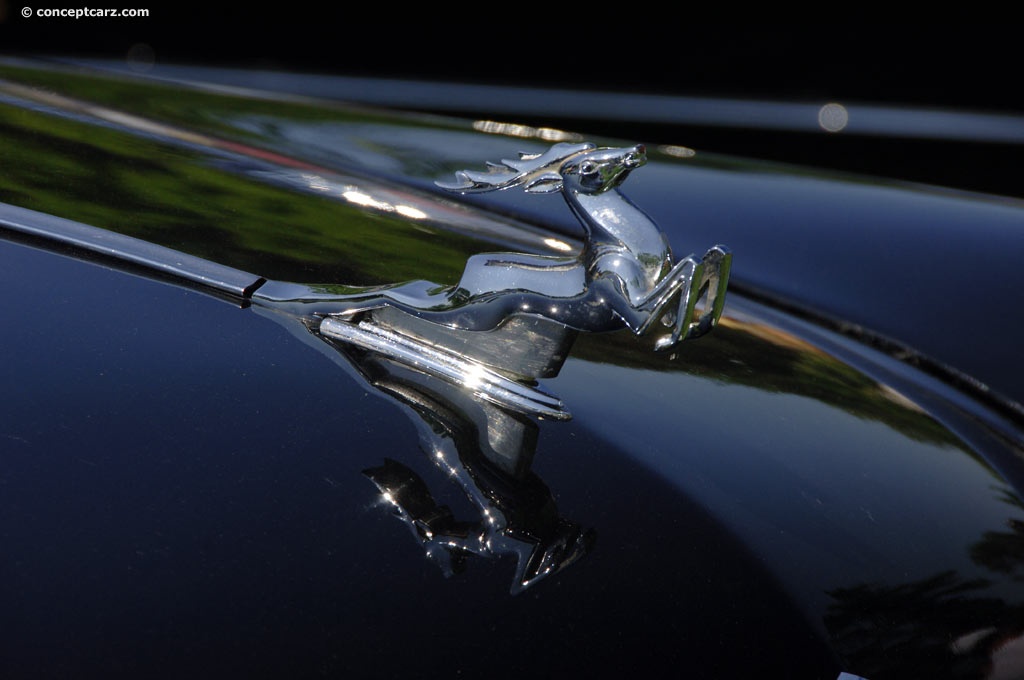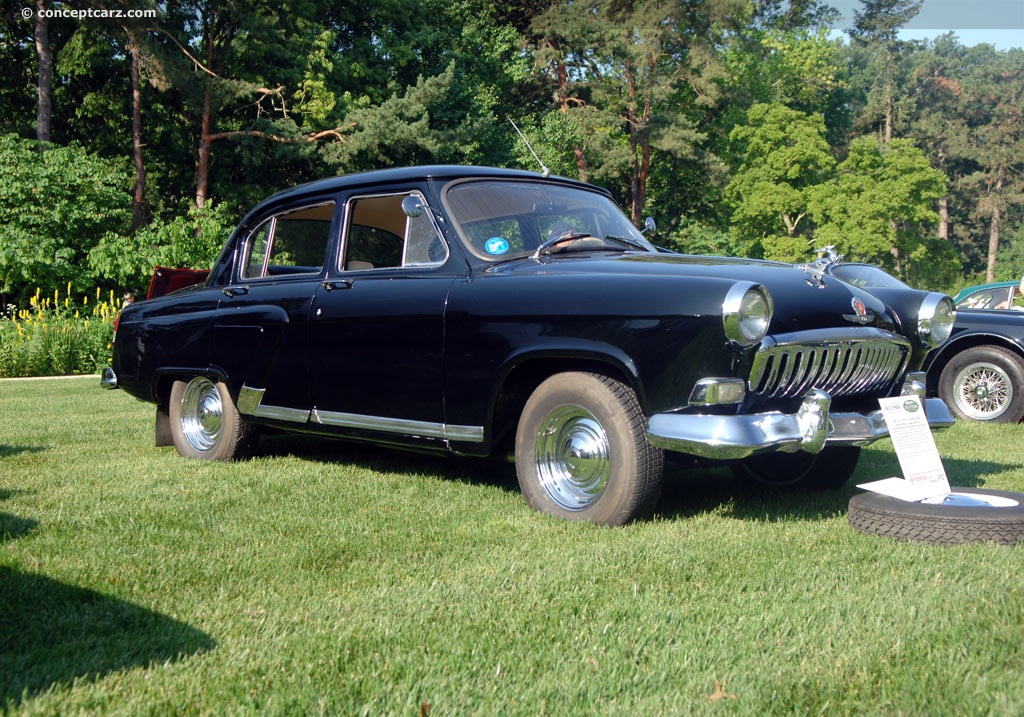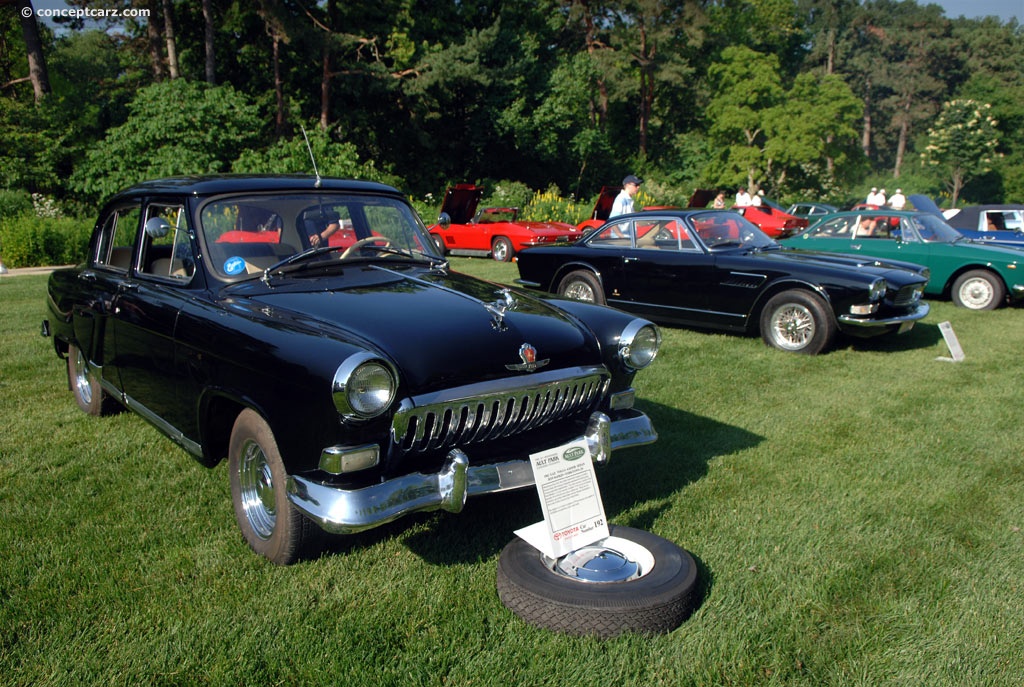One of the most desired vehicles behind the Iron Curtain Soviet-made cars, the 'Volga' were produced in GAZ – 'Gorkovsky Avtobilny Zavod', Nizhny Novgorod- 'Gorky Automobile Plant'. From 1965 until this now, cars under this name have been in production until the recent discontinuance of the assembly. Volga cars were seen as the ultimate status symbol throughout the communist world.During the early 1960s, the need for the renewal of GAZ mid-size cars lineup became very obvious. The GAZ M-21 had been the first to carry the GAZ Volga brand name and had been launched simultaneously with the Citroen DS in 1956, and by this time had become outdated. It looked like a dinosaur even in the late 50s by American standards. Resembling cars were produced from 1962 through 1965 in Europe. Despite good sales of the durable and cheap car in International markets, the time was now to develop a boxier, more modern replacement. In 1962 the GAZ 21 was restyled. Unfortunately, new trim and an improved engine were enough to make the vehicle develop enough to be 1954 modern.Inspired by the exhibits of the 1959 American exhibition in Moscow, the American '59 vehicles were something that a Soviet man had never before seen, the first full-size mockup of the new Volga attempted to mimic the American fashion for sharp tailfins, two-tone paints, panoramic windows, pillarless hardtop bodies, and whitewall tires. Unfortunately, the American late-1950s style was already doomed and in the 1960s, other styling cues were in. Plus it was technically impossible for the plant to begin producing a new car model at that time because all of the production facilities were currently occupied. The first failure did not mean that the project was dumped though by any means. European dealers recommended that a shift to more modern styling and changing the appearance of the M21 would keep sales good. In 1961, design officially began, with Alexander M. Nevzorov; an experienced engineer and the creator of the M-21 Volga, heading up the design team. The exterior was left in the capable hands of young sculptors L.I. Tsikolenko and N.I. Kireev. The ultimate goal of the designers was to create a vehicle that would not share any parts with the previous generation Volga, which was a normal practice for the GAZ at the time.The all-new 2.99L six-cylinder V-engine was intended to be the base engine and boosted up to 136 hp and this design was quite innovative for the time. For European markets where diesel was already popular, a version with inline-4, V8, and 4-cylinder diesel was planned. Unfortunately, the development of ZMZ-24-14 and 24-18 V6s was finished up to the vehicles launch and later after the early 1970s Oil Crisis and the rising of world oil prices, it was discontinued because under the new conditions this large and gas-guzzling by European standards, and the engine was considered to be quite unnecessary for an intermediate vehicle. The 2.5L inline-four remained the base engine while the 5.5L V8 with 3-speed automatic transmission was borrowed from the existing GAZ-23. The diesel engines for GAZ vehicles were traditionally built by Indenor-Peugeot. The GAZ created several experimental Volgas with foreign six-cylinder engines later on. Originally it was planned to develop and release several different versions of transmission, 3 or 4-speed synchromesh manual and 3-speed automatic, along with semi-automatic overdrive was also planned. Unfortunately, the 3-speed manual and column-mounted shifter were rejected from the plans and considered to be too outdated. Overdrive was also not released and automatic transmission was teamed with the V8 only, and the 4-speed manual with floor-mounted shifter remained the only transmission type available with the standard engine. 4-speed transmission as standard equipment was not a common thing in the mid-1960s. Seeking to develop a vehicle that wouldn't look outdated for quite a long time, GAZ designers took into account slow development and long production runs that were typical for the industry in the USSR. Wanting to create a vehicle that was distinctive, but also conservative and featuring a deliberately modem appearance, the styling in particular received special attention. From 1961 until 1965 countless sketches and concept arts along with six full-size mockups have been built. From 1962 through 1962 this time period was an influx of free idea generating. The finished project barely even resembled any of the earliest of the sketches, some of the sketches even showed a station wagon form. The entire vehicle was designed with the right-hand drive in mind, and the dashboard was simple, symmetric, and flat. From 1963 until 1965 the sketches showed many distinctive features like a V-shaped grille and rounded bumpers and a falsehood scoop. At the same time that the designers and engineers were giving their best attempt to create the new car, the plant's production facilities were being heavily reconstructed and upgraded. In '62 the country's first precious casting shop and automated mold casting line were set up. During 1967 and 1968 new diemoldmaking and gearbox plants were built to provide the highest level of technology for this production.During 1965 GAZ designers finally managed to create a vehicle with a modern appearance, yet also a distinctive and recognizable look. Not too round, or too boxy, the new model featured a clean look with simple flat body panels along with delicate bright metal moldings. Both the grill and the rear end were V-shaped. The Volga's appearance combined very recent American and European influences. Produced in 1967, the first prototype of GAZ M24 Volga, and full-scale manufacturing began in 1970. The 'M' designation stood for 'Molotov' and stood in the car's name until entering full-scale manufacturing, but on export models, it stood until the end. Production only began with 31 units, hand-crafter, primarily for road test. In 1969 another 215 units were built. In the fall of 1969, the first serial vehicles rolled off of the assembly line. Because full-scale manufacturing began only in 1970, 1968/1969-built Volgas were often called 'pre-serial'. '68,'69 and early '70 Volgas received two outside rearview mirrors fixed on the front fenders, and later on, the car received one mirror placed on the front left door.
In 1972 a station wagon form was introduced. And the petrol engine is a traditional 4-cylinder that was boosted up to 2500 cc. 98 hp, 145 km/h. The GAZ 24-01 taxi and an ambulance modification, the GAZ 24-03 were introduced in 1973. Built in small numbers, there were other prototypes produced, the Gaz 24-24 with 5,53 liter V8 petrol engine, Gaz 24-95, and a 4x4 model; GAZ 24 cabriolet. The number of cars built per year increased to about 60-70,000 units later on. A total of 1,481,561 units were built including all modifications during its 22 years of production. It was quite difficult to purchase a Volga in the USSR due to the limited number produced for a mass-production vehicle. The car was completely redesigned in 1985 and received a new designation, the GAZ-24-10. Basically, a GAZ 24 with a more modern plastic grille, the GAZ 24-10 was produced from 1985 until 1992. Even modern GAZ Volga vehicles are actually based heavily on the modified GAZ-24 body even though production ceased. Volga cars were traditionally almost the only taxicabs in the USSR. The GAZ 24-01 was introduced in 1971 was a taxicab modification of the GAZ-24. Featuring a cheap and easy-to-wash all-vinyl interior, the distinctive checkerboard stripe on front doors, the cab also featured a low-compression ZMZ-24-01 engine and a taximeter under the dash. Volga taxicabs were originally painted in different light colors, before later all taxicabs were painted lime-yellow. Still famous for its roadworthiness and durability, the Volga GAZ-24 was quite a unique vehicle. Volga taxicabs often featured more than 1,000,000 km on their odometers and had to undergo several engine rebuilds. Due to its slim appearance and two 'fangs' under the front bumper that resembled shrimp's claws, the GAZ-24 sedan was nicknamed 'The Shrimp'. Wagon taxicabs GAZ-24-04 were nicknamed 'The Shed'. The GAZ-24-02 was introduced in 1972 as a 4-door station wagon. Unfortunately, there were some restrictions on public sales of Volga station wagons that came from a small production volume. During the 1970s, and extremely unusual for the 1980s, private-owned Volga wagons were very rare. Hospitals, state-owned trade, and taxi companies, the Peoples Militsiya, the GAI, post offices, and other state enterprises primarily used the Wagons. The 24-02 had a very generous interior area with 3 rows of seats, 7-8 passenger seating, and 465 liters of trunk space. The area behind the front seats could also easily be converted into a spacious one-level cargo compartment. The GAZ-24-02 featured heavy-duty rear leaf springs that enabled it to carry up to 800 lbs of cargo.In 1973, an ambulance-modified Volga was introduced, the GAZ-24-03.V8-powered versions were produced in small numbers following the autumn of 1973. The V8 version had aluminum, 5530 cc, OHV, 195 hp V8, teamed with a 3-speed automatic transmission and power steering as standard equipment. This Volga was designated as GAZ-24-04, while in some official circles, this modification was designated 'device 2424' and was also nicknamed 'The Double'. The KGB mainly used the 'Devices 2424' as interceptors and security vehicles, as well as the GKB and the Communist Party officials as daily drivers. The main job for the '2424' was to accompany governmental Chayka and ZIL limos. The car was redesigned after 1985 and was designated GAZ-24-34. Largely based on the GAZ-24 Volga, the GAZ-24-95 all-terrain vehicle featured a transmission that was derived from the famous UAZ-469 army jeep. From 1973 through 1974 5 cars were hand-crafted in the GAZ. The leader of the USSR at the time, Leonid I. Brezhnev was one of the owners. The GAZ-24-95 combined the amazing off-road abilities of the UAZ with the passenger-car comfort of the Volga. Today two of these vehicles still exist.Exported to many countries, the GAZ-24 Volga was sold from Indonesia and Latin America to Western Europe. The GAZ-24-54 was a right-hand export version. The most popular Volgas in Europe were cars, both sedans, and wagons that were assembled in Belgium by Scaldi-Volga. These vehicles that were equipped with Indenor-Peugeot 4-cylinder diesel engines were designated M24D (D for Diesel) and M24DB (for Diesel Wagon). A symbol of the high social position of its owner, private-owned Volga's were far more expensive and more difficult to get than other Soviet cars. Highly praised by drivers, the Volga was designed for severe road conditions and mostly owner's self-service and earned a lasting reputation for reliability, comfort, and longevity. The GAZ was awarded the Order of Lenin in 1971 for the creation of GAZ-24, along with a new line of trucks, GAZ-52, -53A, and -66. The Volga was also awarded the Gold Medals at international exhibitions in Plovdive, Poland, and Leipzig, East Germany.By Jessica Donaldson
In 1972 a station wagon form was introduced. And the petrol engine is a traditional 4-cylinder that was boosted up to 2500 cc. 98 hp, 145 km/h. The GAZ 24-01 taxi and an ambulance modification, the GAZ 24-03 were introduced in 1973. Built in small numbers, there were other prototypes produced, the Gaz 24-24 with 5,53 liter V8 petrol engine, Gaz 24-95, and a 4x4 model; GAZ 24 cabriolet. The number of cars built per year increased to about 60-70,000 units later on. A total of 1,481,561 units were built including all modifications during its 22 years of production. It was quite difficult to purchase a Volga in the USSR due to the limited number produced for a mass-production vehicle. The car was completely redesigned in 1985 and received a new designation, the GAZ-24-10. Basically, a GAZ 24 with a more modern plastic grille, the GAZ 24-10 was produced from 1985 until 1992. Even modern GAZ Volga vehicles are actually based heavily on the modified GAZ-24 body even though production ceased. Volga cars were traditionally almost the only taxicabs in the USSR. The GAZ 24-01 was introduced in 1971 was a taxicab modification of the GAZ-24. Featuring a cheap and easy-to-wash all-vinyl interior, the distinctive checkerboard stripe on front doors, the cab also featured a low-compression ZMZ-24-01 engine and a taximeter under the dash. Volga taxicabs were originally painted in different light colors, before later all taxicabs were painted lime-yellow. Still famous for its roadworthiness and durability, the Volga GAZ-24 was quite a unique vehicle. Volga taxicabs often featured more than 1,000,000 km on their odometers and had to undergo several engine rebuilds. Due to its slim appearance and two 'fangs' under the front bumper that resembled shrimp's claws, the GAZ-24 sedan was nicknamed 'The Shrimp'. Wagon taxicabs GAZ-24-04 were nicknamed 'The Shed'. The GAZ-24-02 was introduced in 1972 as a 4-door station wagon. Unfortunately, there were some restrictions on public sales of Volga station wagons that came from a small production volume. During the 1970s, and extremely unusual for the 1980s, private-owned Volga wagons were very rare. Hospitals, state-owned trade, and taxi companies, the Peoples Militsiya, the GAI, post offices, and other state enterprises primarily used the Wagons. The 24-02 had a very generous interior area with 3 rows of seats, 7-8 passenger seating, and 465 liters of trunk space. The area behind the front seats could also easily be converted into a spacious one-level cargo compartment. The GAZ-24-02 featured heavy-duty rear leaf springs that enabled it to carry up to 800 lbs of cargo.In 1973, an ambulance-modified Volga was introduced, the GAZ-24-03.V8-powered versions were produced in small numbers following the autumn of 1973. The V8 version had aluminum, 5530 cc, OHV, 195 hp V8, teamed with a 3-speed automatic transmission and power steering as standard equipment. This Volga was designated as GAZ-24-04, while in some official circles, this modification was designated 'device 2424' and was also nicknamed 'The Double'. The KGB mainly used the 'Devices 2424' as interceptors and security vehicles, as well as the GKB and the Communist Party officials as daily drivers. The main job for the '2424' was to accompany governmental Chayka and ZIL limos. The car was redesigned after 1985 and was designated GAZ-24-34. Largely based on the GAZ-24 Volga, the GAZ-24-95 all-terrain vehicle featured a transmission that was derived from the famous UAZ-469 army jeep. From 1973 through 1974 5 cars were hand-crafted in the GAZ. The leader of the USSR at the time, Leonid I. Brezhnev was one of the owners. The GAZ-24-95 combined the amazing off-road abilities of the UAZ with the passenger-car comfort of the Volga. Today two of these vehicles still exist.Exported to many countries, the GAZ-24 Volga was sold from Indonesia and Latin America to Western Europe. The GAZ-24-54 was a right-hand export version. The most popular Volgas in Europe were cars, both sedans, and wagons that were assembled in Belgium by Scaldi-Volga. These vehicles that were equipped with Indenor-Peugeot 4-cylinder diesel engines were designated M24D (D for Diesel) and M24DB (for Diesel Wagon). A symbol of the high social position of its owner, private-owned Volga's were far more expensive and more difficult to get than other Soviet cars. Highly praised by drivers, the Volga was designed for severe road conditions and mostly owner's self-service and earned a lasting reputation for reliability, comfort, and longevity. The GAZ was awarded the Order of Lenin in 1971 for the creation of GAZ-24, along with a new line of trucks, GAZ-52, -53A, and -66. The Volga was also awarded the Gold Medals at international exhibitions in Plovdive, Poland, and Leipzig, East Germany.By Jessica Donaldson
Gaz
1962 Gaz Volga Vehicle Profiles
Recent Vehicle Additions
Performance and Specification Comparison
Related Automotive News

Hyundai Presents 2022 Tucson SUV to U.S. Media
Tucson is Hyundais Best-selling Model Globally and Represents its Vision for Progressive Design, Eco-focused Powertrains and Segment-Leading Technologies All-new Tucson is Larger with more Passenger and Cargo Volume...

2021 Hyundai Santa Fe Adds Innovative Design, Powertrain And Driver Convenience Technologies
New Smartstream 2.5-liter Turbocharged Engine with estimated 277 Horsepower
Striking Design Cues with Advanced Lighting Signature Technology
New Available Hybrid Propulsion with All-Wheel Drive Capability
New Advanced Driver Convenience and Safe...

2020 Hyundai Tucson Refreshes Color Palette And Repackages Content For Enhanced Customer Value
FOUNTAIN VALLEY, Aug. 8, 2019 – The 2020 Hyundai Tucson has refreshed its palette of exterior colors and repackaged content for enhanced customer value.
2020 TUCSON MODEL CHANGES
Stellar Silver replaces Molten Silver
Magnetic Force r...

2020 Hyundai Santa Fe Adds Safety Features And Repackages Content For Enhanced Customer Value
Newly Available Rear Occupant Alert and Blind View Monitor Safety Features
Wireless device charging feature now standard on more trims
Features repackaged for increased customer value and choice across all trim lines
FOUNTAIN VALLEY, Calif.,...

Final Countdown Underway To South Florida's Premier Collector Car Auction
Auctions America kicks off its 2013 auction season, March 22-24 with its highly anticipated Fort Lauderdale Collector Car Auction
Celebrating its 11th year, the multi-day auction features more than 550 quality collector cars
Latest feature attr...



























